Human development summary capturing achievements in the HDI and complementary metrics that take into account gender gaps, inequality, planetary pressures and multidimensional poverty.
Human Development Index
The HDI is a summary measure for assessing average achievement in three basic dimensions of human development: a long and healthy life, access to knowledge and a decent standard of living. India's HDI value for 2022 is 0.644— which put the country in the Medium human development category—positioning it at 134 out of 193 countries and territories.
Between 1990 and 2022, India's HDI value changed from 0.434 to 0.644, an change of 48.4 percent.
Between 1990 and 2022, India's life expectancy at birth changed by 9.1 years, expected years of schooling changed by 4.6 years and mean years of schooling changed by 3.8 years. India's GNI per capita changed by about 287.0 percent between 1990 and 2022.
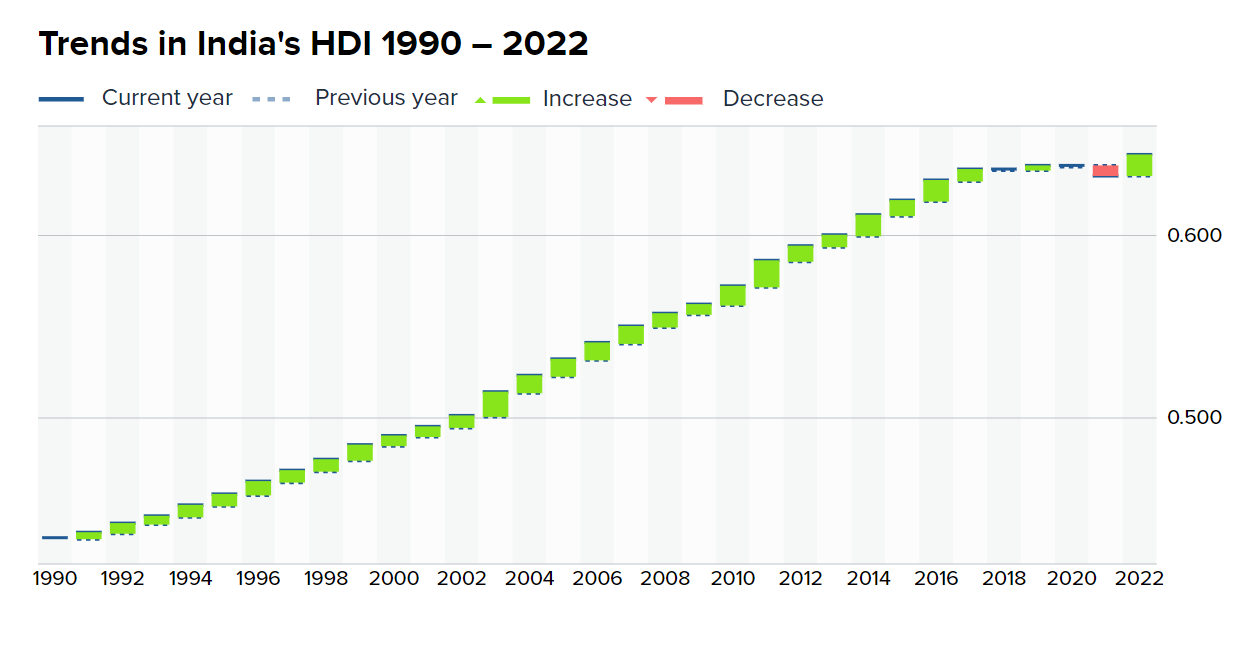
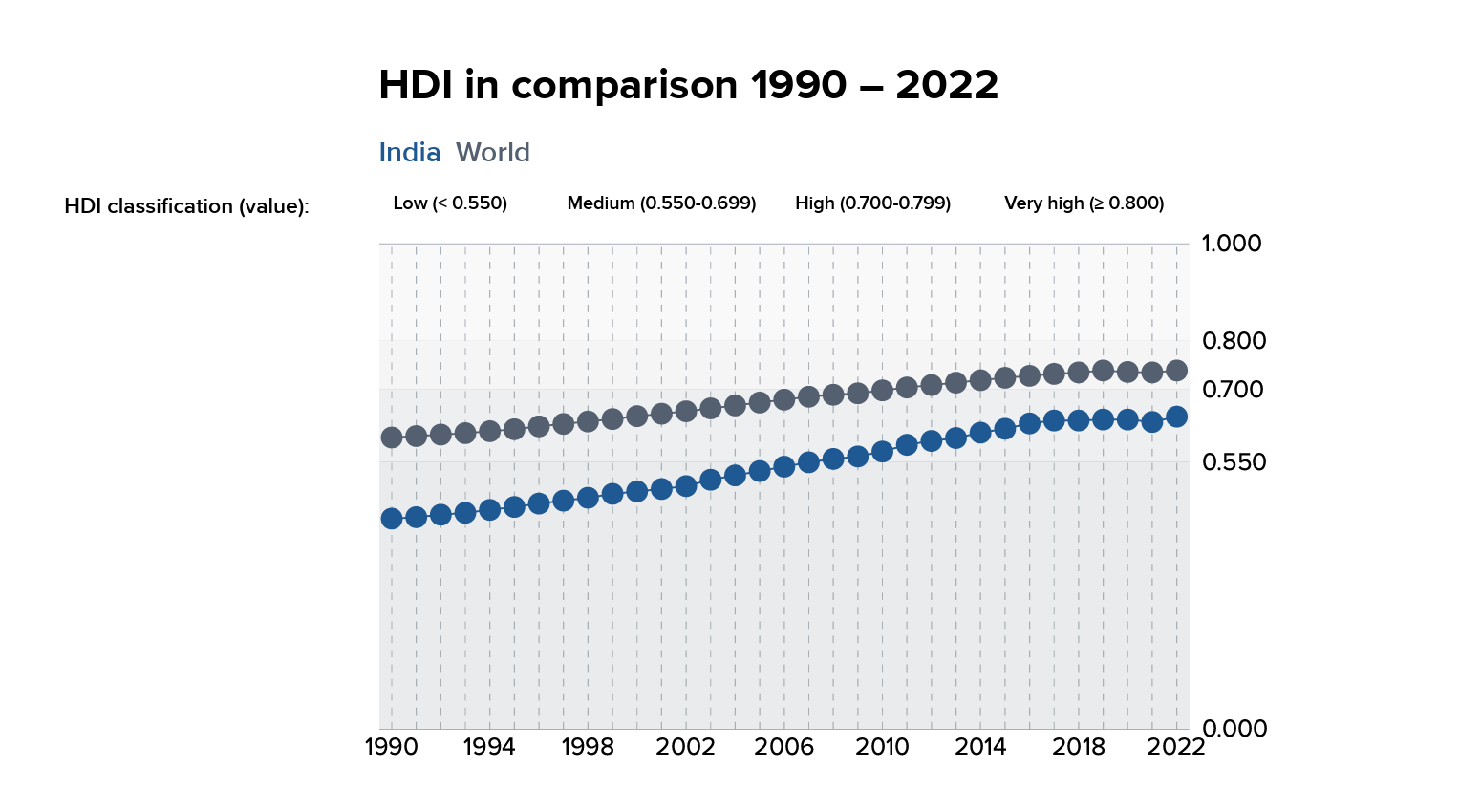
Gender Development Index
The GDI measures gender gaps in achievements in three basic dimensions of human development: health (measured by female and male life expectancy at birth), knowledge (measured by female and male expected years of schooling for children and mean years of schooling for adults aged 25 years and older) and living standards (measured by female and male estimated GNI per capita). It is a ratio of the female to the male HDI. The 2022 female HDI value for India is 0.582 in contrast with 0.684 for males, resulting in a GDI value of 0.852, placing it into Group 5.
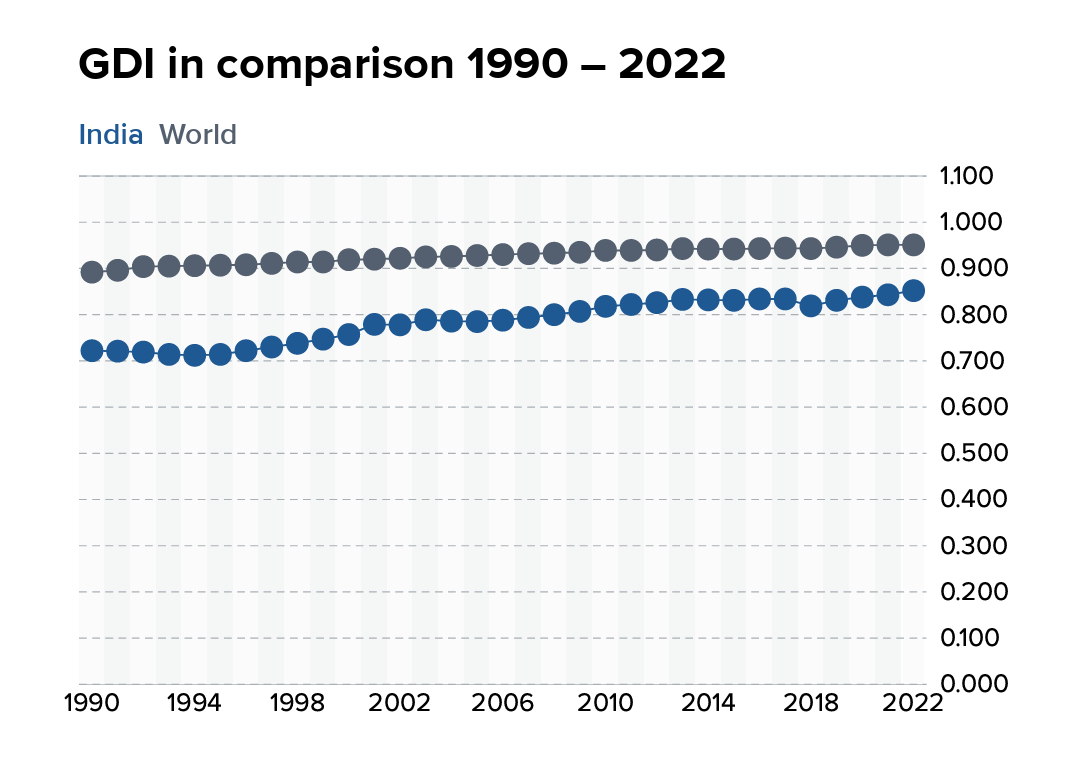
Inequality-adjusted HDI
The IHDI adjusts the HDI for inequality in the distribution of each dimension across the population. The ‘loss’ in human development due to inequality is given by the difference between the HDI and the IHDI. As the inequality in a country increases, the loss in human development also increases. India's loss due to inequality is 31.1 percent, which lowers the HDI to 0.444 in 2022.
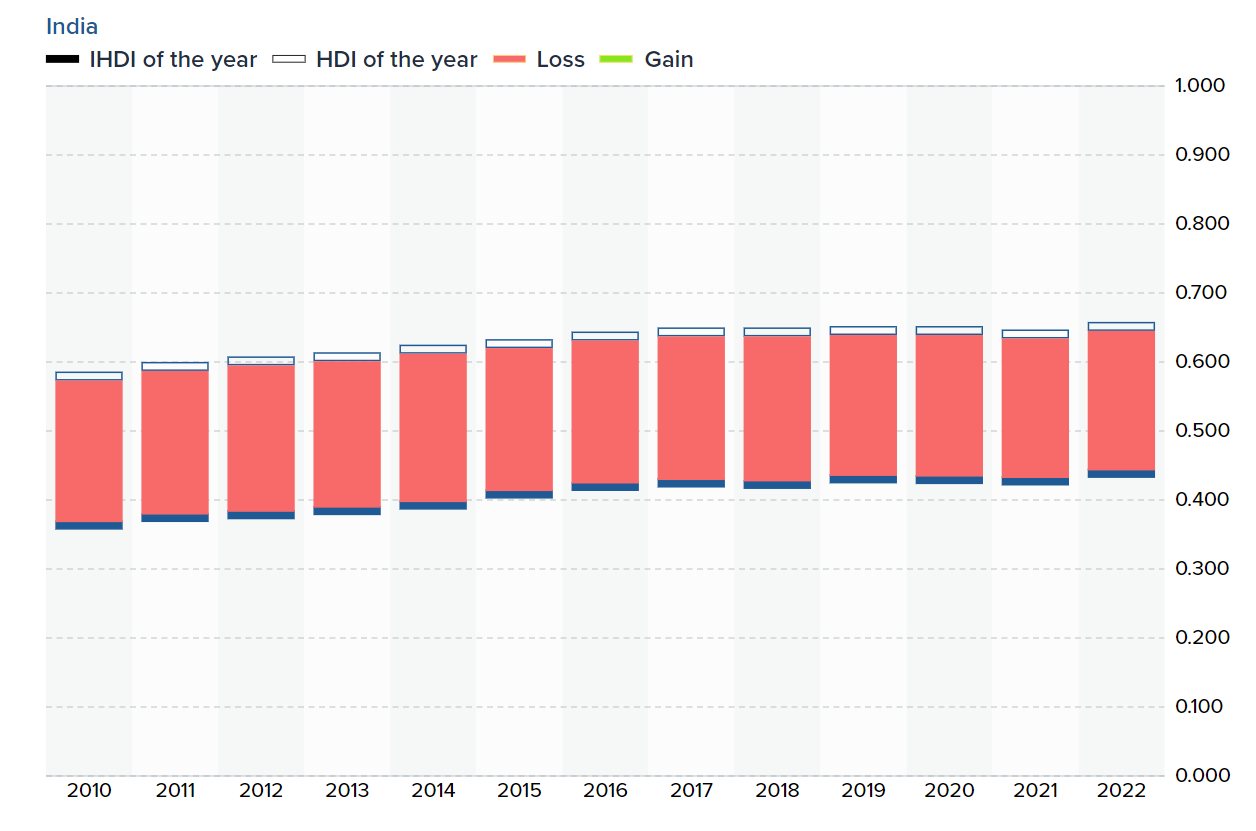
Gender Inequality index
The GII measures gender inequalities in three key dimensions – reproductive health, empowerment, and labour market. Reproductive health is measured by maternal mortality ratio and adolescent birth rates; empowerment is measured by the shares of parliamentary seats held and population with at least some secondary education by each gender; and labour market participation is measured by the labour force participation rates for women and men. India has a GII value of 0.437, ranking it 108 out of 166 countries in 2022.
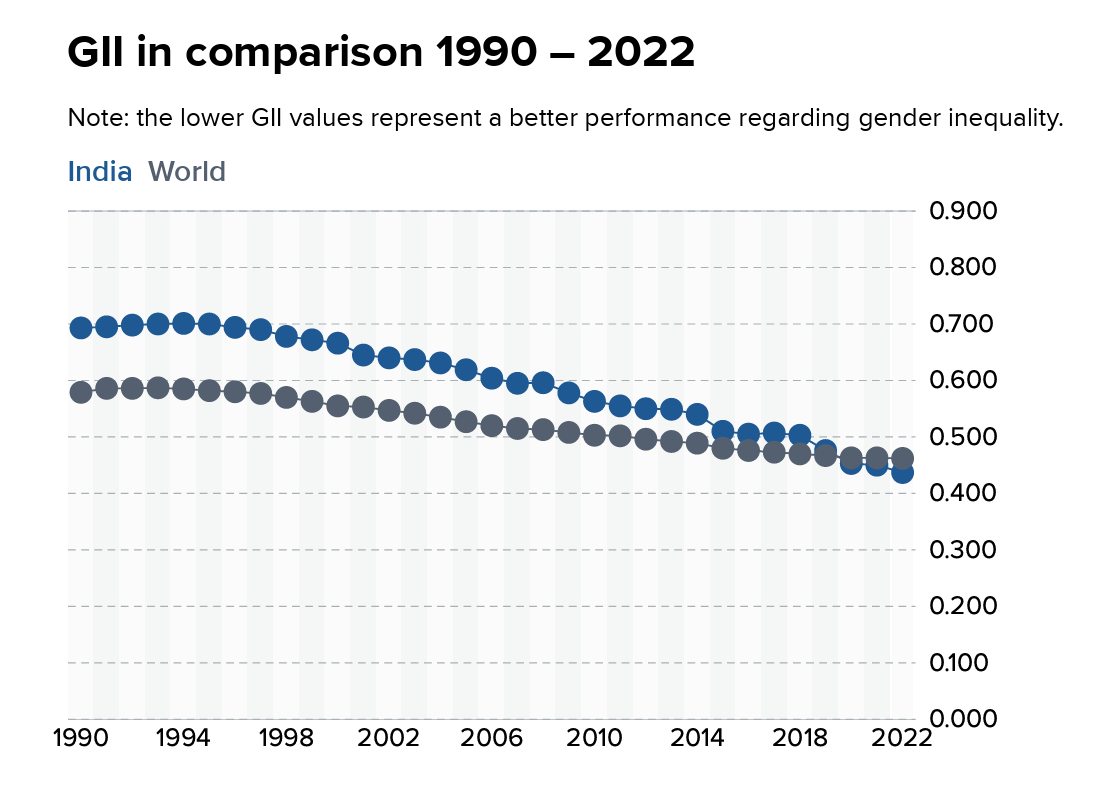
Gender Social Norms Index
The GSNI assesses the impact of social beliefs on gender equality across four dimensions, including political, educational, economic, and physical integrity. It draws upon data from 91 countries, encompassing the World Values Survey waves 5 (2005-2009), 6 (2010-2014), and 7 (2017-2022), with the latest update reflecting information as of 12 January 2023. The core GSNI measures the percentage of people with at least one bias. The GSNI ranges from 0 to 1. Higher GSNI values indicate higher biases against gender equality and women's empowerment.
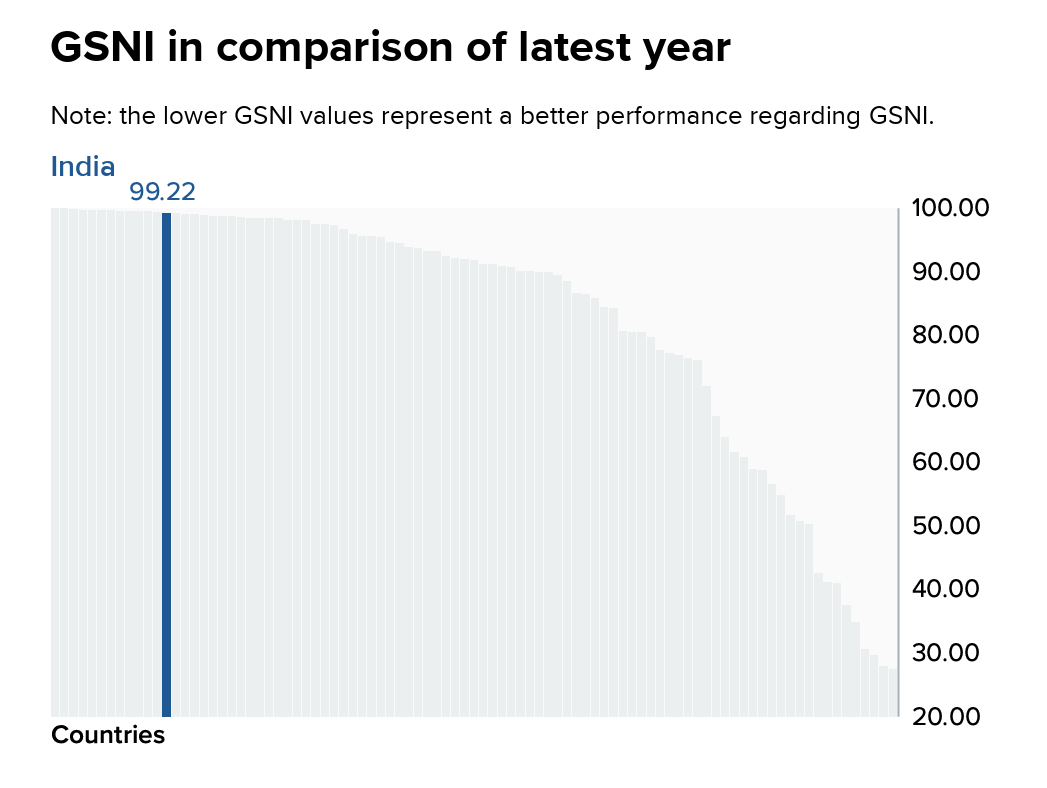
Multidimensional Poverty Index
The MPI looks beyond income and identifies multiple deprivations at the household level in three key dimensions: health, education and standard of living, comprising 10 indicators. People who experience deprivation in at least one third of these weighted indicators fall into the category of multidimensionally poor.
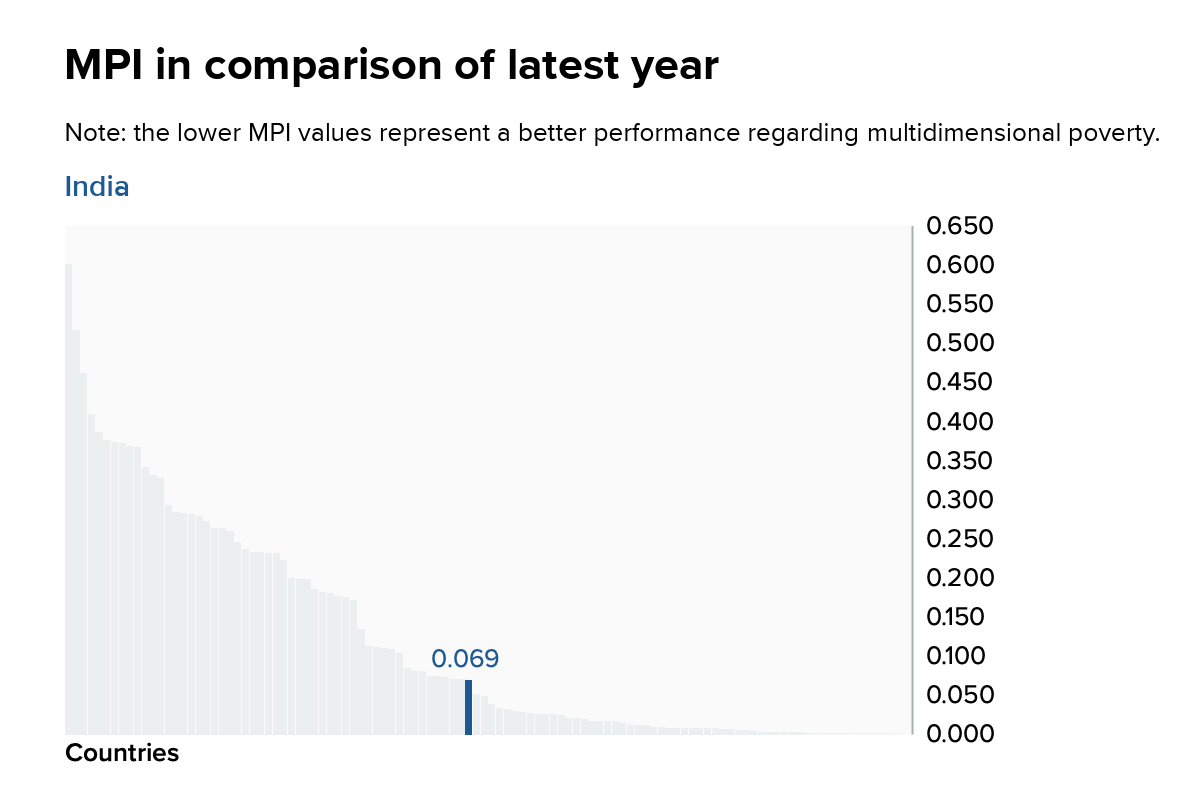
Planetary pressures-adjusted HDI
The PHDI adjusts the HDI for pressures on the planet to reflect a concern for intergenerational inequality. It is the level of human development adjusted by carbon dioxide emissions per person (production-based) and material footprint per capita to account for the excessive human pressure on the planet. In an ideal scenario where there are no pressures on the planet, the PHDI equals the HDI. However, as pressures increase, the PHDI falls below the HDI.


 Locations
Locations




